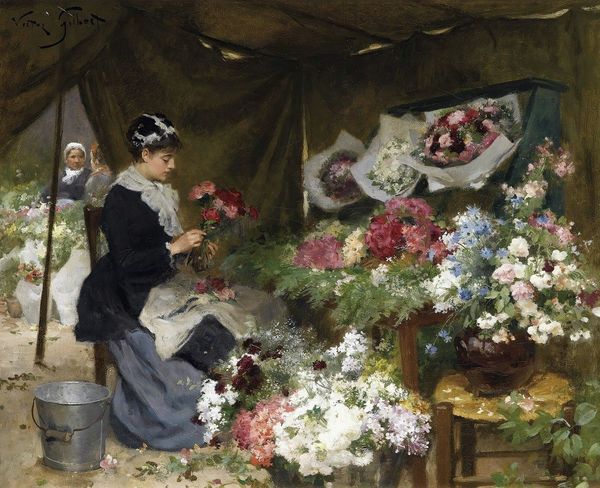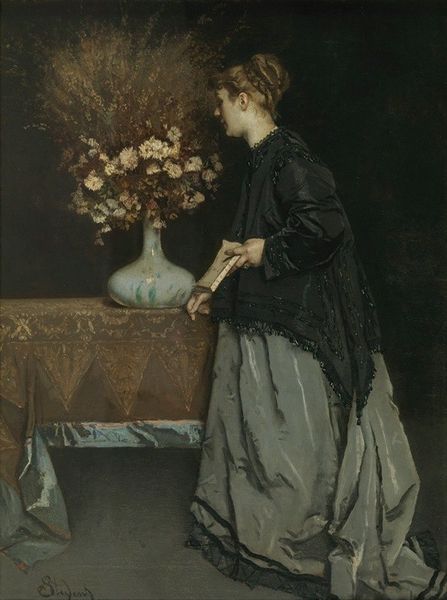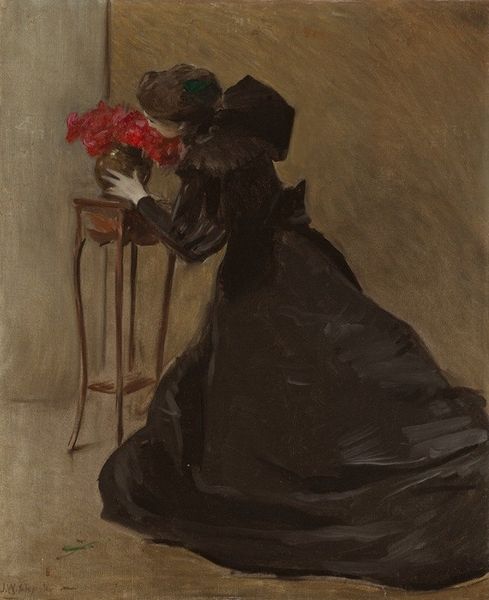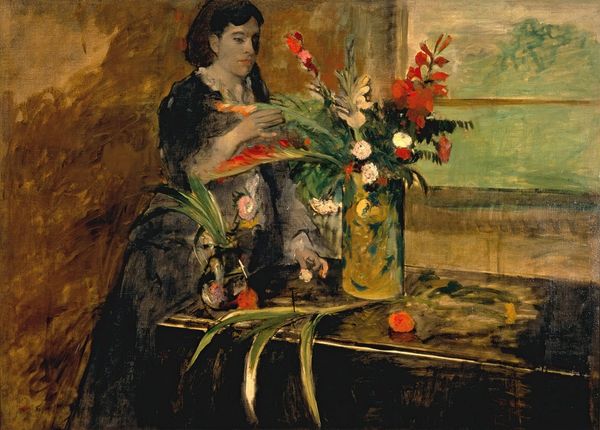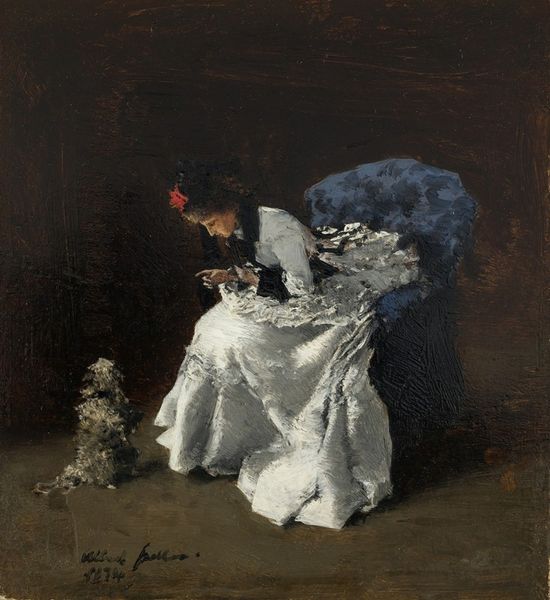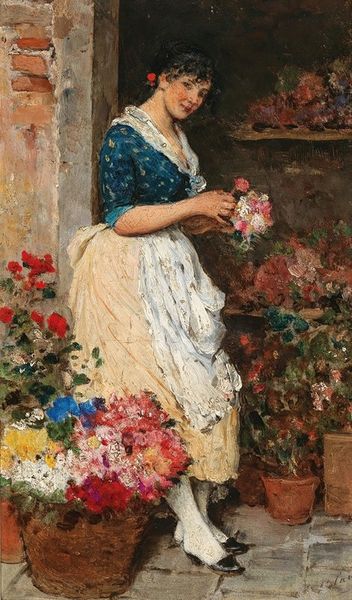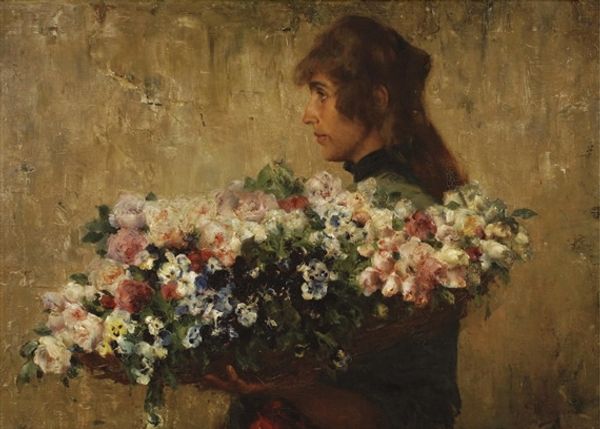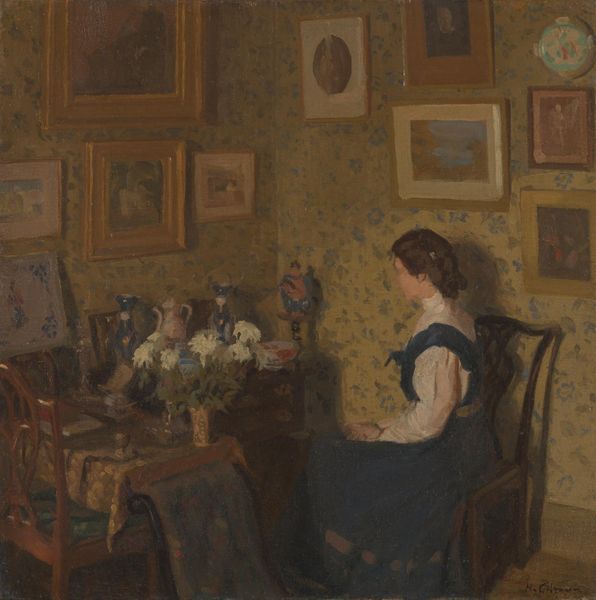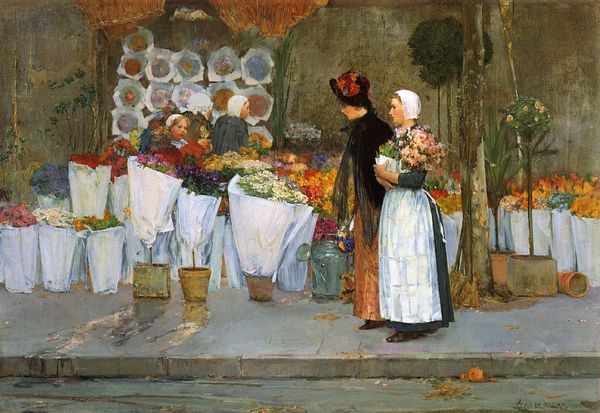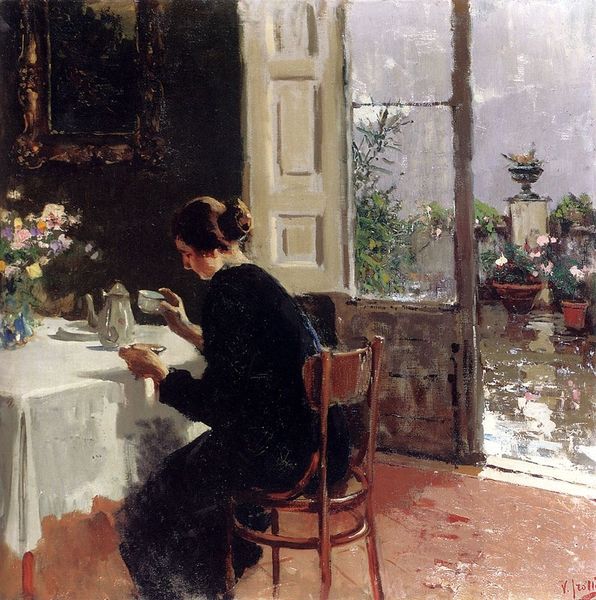
painting, oil-paint
#
portrait
#
gouache
#
painting
#
impressionism
#
oil-paint
#
figuration
#
oil painting
#
watercolour illustration
#
genre-painting
#
realism
Copyright: Public Domain: Artvee
Curator: Victor Gabriel Gilbert's 1877 oil painting, "La marchande de fleurs," presents a captivating glimpse into the life of a Parisian flower seller. Editor: The immediate impression is one of contained energy. Despite the profusion of blossoms, the muted palette and controlled brushstrokes create a sense of quiet industry. Curator: Observe the painting’s composition. The artist masterfully balances light and shadow, drawing our eye to the woman’s face, which is softly illuminated against a dark background. The placement of the bouquets also guides our vision through the piece, almost like following lines in a geometric proof. Editor: Indeed, but consider this image beyond the formal elements. The painting, in its portrayal of a working-class woman in late 19th-century Paris, touches upon themes of gender and labor. Does the artist seek to romanticize or represent the realities of her daily life? And what about the presentation of femininity as inextricably linked to the display of beauty? Curator: I see the interplay between Realism and Impressionism within this work. Gilbert’s meticulous detailing of the flowers coexists with softer, less defined elements like the background. The texture achieved by oil paint creates a tangible presence, making the scene feel almost palpable. Editor: Don’t forget to situate Gilbert himself! Working within a period of vast social change, how does his class, privilege, and identity inform his lens into the world of working women, such as flower sellers, and does his rendering become another layer to be excavated from this artwork? Curator: It's certainly a fascinating exploration of complementary perspectives and contrasting qualities. "La marchande de fleurs" stands as both a representational and evocative painting in its own right. Editor: Yes, "La marchande de fleurs" offers rich possibilities for dialogue that consider gender, labor, and class—and I think it challenges our assumptions about the art, identity, and the era.
Comments
No comments
Be the first to comment and join the conversation on the ultimate creative platform.
